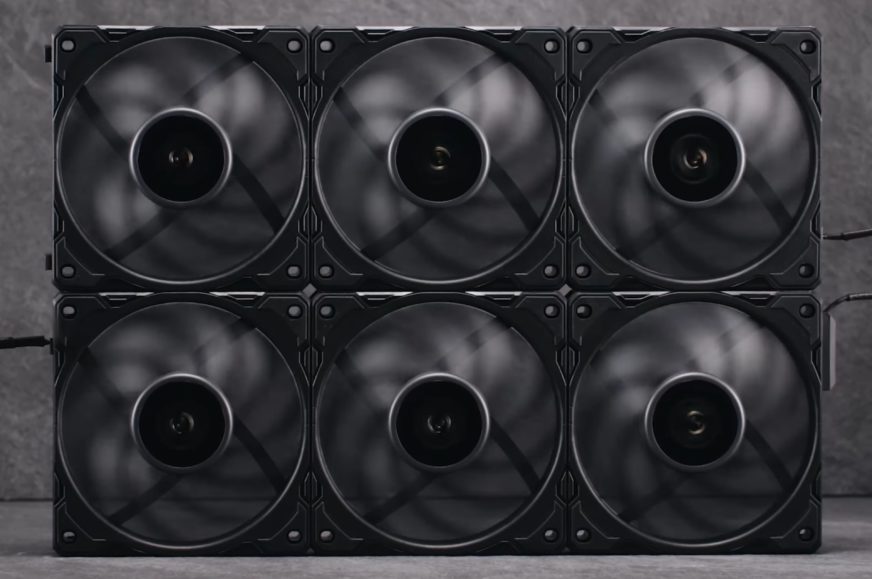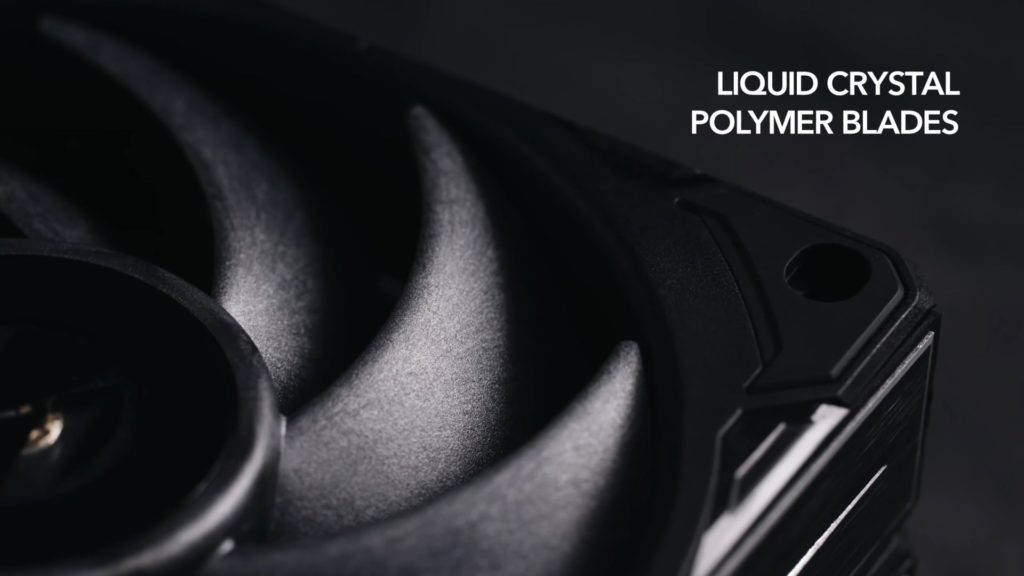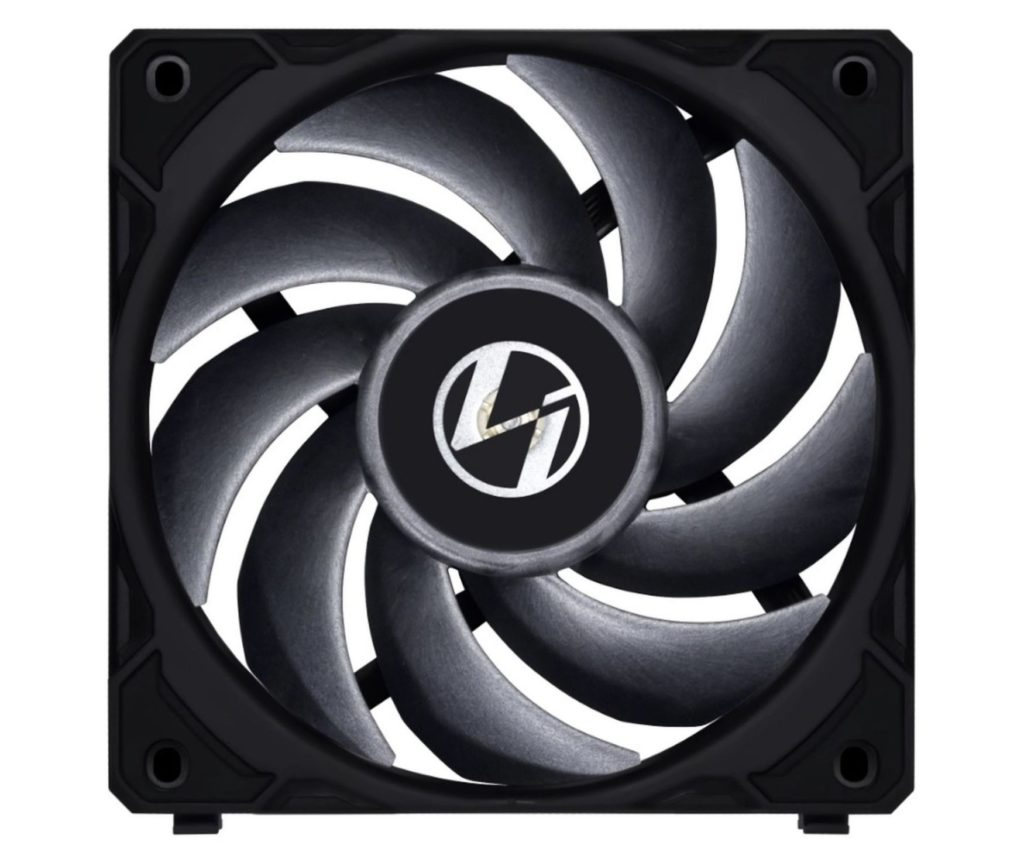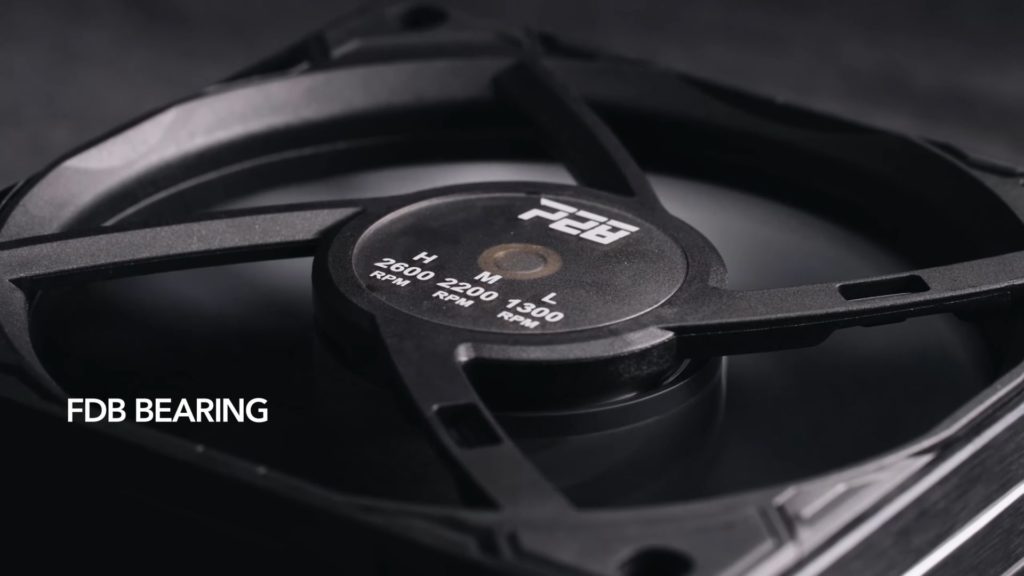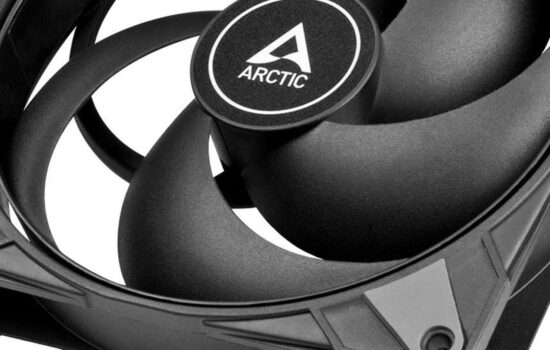Lian Li UNI Fan P28
The parameters of the latest fans are very impressive indeed. Based on the experience of testing and observing the influence of individual elements on the performance of the fans, in this case we have to work with the idea that the UNI P28 has the prerequisites to break through to the very top of efficiency. And, on top of that, with a very practical connection in series that most high-end fans do not have.
Lian Li cites acoustic optimizations as the main selling point to the freshly released P28 fan – it is supposed to be quiet, and apparently it’s not going to be a cliché. This claim is built on a good foundation, as LCP is used to manufacture the rotor and maybe more. Moreover, the blades are very thick, so even with their longer length, they will still be stiff at the end, or if we reverse it, they won’t be flexible, and thus negligible vibrations can be expected even at high speeds.
The rotor design of the P28 fans does not give much room for more resonant frequencies, or tonal peaks, which tend to make the fans “noisy”. Sure, there will be aerodynamic noise from the airflow, but no fan can avoid that – the sound of the airflow is simply always audible, and it increases as the speed of the airflow increases.
The geometric design of the new fans is also efficient with regard to the highest possible airflow at the lowest possible noise level. Although there are more fans with a rotor built on rigid “scythe-shaped” blades, there are fewer fans that have such small blade spacing. The UNI Fan P28 has them noticeably smaller even compared to the Noctua NF-12×25. The latter, in turn, probably has (if Lian Li’s figure is correct) a smaller gap between the frame tunnel and the blade tips, but the difference between 0.6 mm (UNI Fan P28) and 0.5 mm (NF-A12x25) doesn’t affect the result too much, as the difference in cross-section is really negligible. This is even when these gaps (between the blades and the frame) are larger. From the point of view of achieving the highest possible static pressure or the lowest possible airflow drop due to obstacle resistance, the “leakage” space created between the blades longitudinally plays a more important role. And also the UNI Fan P28 has a above-standard thickness of 28 mm. So somewhere between the standard 25 mm and 30 mm of the Phanteks T30.
Static pressure is listed in the parameters as 4.79 mm H2O at “only” 2600 rpm. This corresponds to airflow of 156.3 m3/h. To prevent overly aggressive control in some cases (with higher speeds and more aerodynamic noise than necessary), the P28 includes a maximum speed limiter. Changing the position of the mechanical switch from H (High) to M (Medium) should result in capping at about 2200 rpm, and then to 1300 rpm at L (Low).
We’ve got the aerodynamic properties down, they look good, but Lian Li is also betting on a super-convenient installation management on cooler radiators or cases with multiple fans side-by-side. This is done by interconnecting the fans via connectors in the frames. This system was used, for example, by the older UNI Fan AL120 or even earlier UNI Fan SL1x0. Lian Li is a pioneer in this regard.
The P28 fans are available in black and white, in single packs, but also in triple packs with a splitter. The suggested price per unit is 26 USD regardless of color, and a triple pack then goes for 75 USD. Those who would miss the LED elements can optionally buy an ARGB LED strip, which can replace the pre-installed aluminium side bar (of the fans). It is formatted with the use of three fan lengths in mind.
English translation and edit by Jozef Dudáš
- Contents
- Lian Li UNI Fan P28





